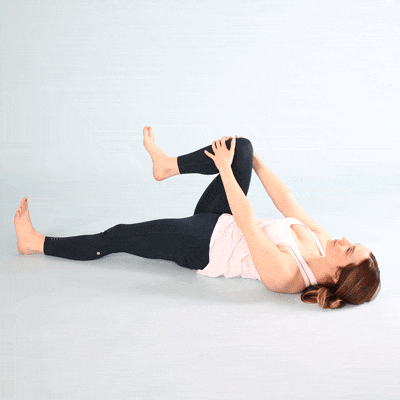The sacralization of L5 is a spinal condition that occurs when the fifth lumbar vertebra (L5) fuses with the sacrum, leading to altered biomechanics and potential discomfort. This condition can affect individuals of varying ages and lifestyles, causing pain and limiting mobility.
In this blog post, we will discuss about the sacralization of L5 and explore effective exercises for its treatment.
Let’s Understand The Sacralization of L5:
Sacralization of L5 is a congenital anomaly where the fifth lumbar vertebra fuses with the sacrum, forming a single, larger bone structure.
This fusion can disrupt the normal range of motion in the lower back, leading to pain, stiffness, and potential nerve compression.
The condition may be asymptomatic in some cases, but for others, it can significantly impact daily activities and overall quality of life.
Symptoms of Sacralization of L5:
- Lower Back Pain:Individuals with sacralization of L5 often experience persistent lower back pain, which can range from mild discomfort to sharp, shooting sensations.
- Sciatica:Compression of nerves due to the altered spinal structure may lead to sciatic nerve irritation, causing pain that radiates down the buttocks and into the legs.
- Limited Flexibility:Fusion of the L5 vertebra with the sacrum can restrict the normal range of motion in the lower back, resulting in stiffness and reduced flexibility.
- Muscle Weakness:Weakened muscles in the lower back and legs may occur, contributing to difficulties in maintaining proper posture and performing physical activities.
- Numbness or Tingling:Nerve compression associated with sacralization can lead to sensations of numbness or tingling, especially in the buttocks and legs.
- Changes in Gait:Altered biomechanics may affect the way individuals walk, leading to changes in gait patterns and potential discomfort during movement.
Diagnosis of Sacralization of L5:
- Medical History:Healthcare professionals will gather information about the patient’s medical history, including any family history of spinal conditions and details about the onset and nature of symptoms.
- Physical Examination:A thorough physical examination, including neurological tests, will be conducted to assess muscle strength, reflexes, and any signs of nerve compression.
- Imaging Studies:X-rays, MRI (Magnetic Resonance Imaging), or CT (Computed Tomography) scans may be ordered to visualize the spine and identify the fusion of the L5 vertebra with the sacrum.
- Pain Assessment:Patients may be asked to describe the location, intensity, and nature of their pain to help in confirming the diagnosis and determining the most appropriate treatment plan.
- Functional Assessment:Assessing the impact of sacralization on daily activities and functionality helps in tailoring a treatment approach that addresses individual needs and goals.
- Consultation with Specialists:In some cases, consultation with orthopedic specialists or neurosurgeons may be recommended to explore surgical options or more invasive treatments.
Sacralization of L5 Treatment Exercises
1. Pelvic Tilts:
- Position: Lie on your back with knees bent and feet flat on the floor.
- Exercise: Tighten your abdominal muscles, pressing your lower back into the floor. Hold for 3-5 seconds, then release.
- Repetition: Perform 10-15 repetitions.
- Benefits: Pelvic tilts engage the core muscles, promoting stability in the lower back and pelvis.
2. Cat-Cow Stretch:

- Position: Start on hands and knees in a tabletop position.
- Exercise: Arch your back up towards the ceiling (cat pose), then dip your lower back down (cow pose). Move between the two positions in a flowing motion.
- Repetition: Repeat for 10 cycles.
- Benefits: This dynamic stretch enhances flexibility and mobility in the spine, particularly targeting the lumbar region.
3. Child’s Pose:

- Position: Begin on hands and knees, then sit back on your heels with arms extended forward.
- Exercise: Lower your chest towards the floor, feeling a gentle stretch in the lower back.
- Duration: Hold for 30 seconds while breathing deeply.
- Benefits: Child’s pose helps release tension in the lower back and promotes relaxation.
4. Bridge Exercise:

- Position: Lie on your back with knees bent and feet flat on the floor.
- Exercise: Lift your hips towards the ceiling, creating a straight line from shoulders to knees. Hold for 3-5 seconds, then lower back down.
- Repetition: Perform 12-15 repetitions.
- Benefits: Bridges target the glutes and lower back muscles, enhancing strength and stability in the pelvic region.
5. Pelvic Floor Exercises:
- Exercise: Engage your pelvic floor muscles by tightening them, as if stopping the flow of urine. Hold for 3-5 seconds, then release.
- Repetition: Repeat 10-12 times.
- Benefits: Strengthening the pelvic floor provides additional support to the lower back and helps improve overall core stability.
6. Knee-to-Chest Stretch:

- Position: Lie on your back with knees bent. Bring one knee towards your chest, holding it with both hands.
- Exercise: Gently pull the knee towards your chest, feeling a stretch in the lower back. Hold for 20-30 seconds.
- Repetition: Repeat with the opposite leg.
- Benefits: This stretch helps alleviate tension in the lower back and promotes flexibility.
7. Seated Forward Bend:

- Position: Sit on the floor with legs extended in front of you.
- Exercise: Hinge at the hips and reach towards your toes, keeping the back straight. Hold for 20-30 seconds.
- Repetition: Repeat 2-3 times.
- Benefits: The seated forward bend stretches the hamstrings and lower back, fostering flexibility and reducing stiffness.
Incorporating these exercises into a regular routine, under the guidance of a healthcare professional or physical therapist, can contribute to the management of sacralization of L5 by improving flexibility, strength, and overall functionality in the lower back and pelvic region. It’s essential to perform these exercises with proper form and gradually increase intensity as tolerated. Always consult with a healthcare provider before starting a new exercise program, especially for individuals with existing medical conditions.


